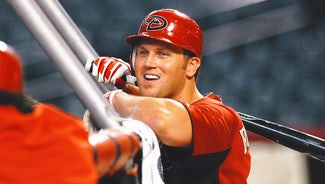
MLB creates sticky situation by cracking down on pitchers' grip tactics midseason
By Ben Verlander
FOX Sports MLB Analyst
Let me tell you about a technique used in baseball since the beginning of the sport: doctoring the baseball.
The practice of doctoring a baseball was not only common but also tolerated in the first two decades of the 1900s. Then, in 1921, the "spitball" was banned, along with any other doctoring of the baseball.
You might find yourself asking, "What exactly is doctoring a baseball? What is all of this substance talk?"
Since the sport's beginning, pitchers have been trying to put things on the baseball to make it do something it otherwise wouldn’t do. Those things include substances such as pine tar, spit, Vaseline, petroleum jelly and sunscreen. They've also used different tools to scuff the baseball, such as sandpaper, nail files and emery boards.
Truthfully, the list could go on and on. Whatever you think could be used probably was used, and all of these things make the baseball move in different ways.
Slippery substances, such as spit and Vaseline, make the baseball ride through the air as if gravity weren’t at play. Think of them as pushing the air downward, almost.
Sticky substances, such as pine tar and, more recently, Spider Tack, create more spin on the baseball, making pitches move more sharply.
The tools, such as sandpaper or nail files, are used to scuff a baseball on one side, causing the ball to move abnormally in the opposite direction of the scuff.
How much is all this actually used? Well, after substances were officially outlawed in 1921, substance use never actually stopped.
In 1974, Gaylord Perry, a pitcher with more than 300 career wins to his name, came out with the book "Me and the Spitter." The book was an autobiographical confession of how he cheated by using spit and Vaseline to doctor the baseball. He was an active player at the time the book was released.
On August 3, 1987, Joe Niekro, a pitcher for the Minnesota Twins, was questioned and searched by the umpires, as he was suspected of cheating. As Niekro was being searched, he reached in his back pocket and quickly discarded something, hoping the umpires wouldn’t see. They did, and what they found was an emery board and a piece of sandpaper that he was using to scuff the baseball.
Niekro was ejected from the game.
I was listening to a game the other day when John Kruk — a retired first baseman for the Chicago White Sox, Philadelphia Phillies and San Diego Padres and currently an MLB announcer — said something that caught my attention.
"You know, back in my day, when I was playing first base, I used to cut out a little hole in my glove. I would shove a little piece of sandpaper in there, and when the pitcher would pick off over to first base, I would scuff up the ball a little using the sandpaper in my glove. I would throw it back to the pitcher, and they would look at the baseball and then look back at me and give me a little head nod."
For more up-to-date news on all things MLB, click here to register for alerts on the FOX Sports app!
The instances of substance use throughout the game of baseball are endless.
I was drafted in 2013 and played five years of professional baseball. Throughout my time in the sport, the one thing that was consistent was the use of some sort of substance on the ball. In my first year in professional baseball, my team's pitchers literally had a meeting on the best way to rub up the baseball for grip.
That said, as the sport has evolved, with more cameras on players and in bullpens, the use of things to alter the movement of the baseball has decreased overall. What we were left with was the old standby: sunscreen and rosin, which are by far the most popular substances used by pitchers, simply to get a better grip on the baseball.
So why does MLB care this year? Why did we get to a point where the league is cracking down on this for the first time since substances and doctoring the baseball were banned in 1921?
Simply put, it started to get out of hand.
Today more than ever, we have access to numbers, numbers such as spin rate, the measurement of how quickly a pitch rotates in the air. Spin rate is measured in revolutions per minute (RPM).
After a few years of tracking spin rate, which became available through Statcast in 2015, a lot of data has piled up for every pitcher who has appeared in an MLB game. And over the past year or so, we began to see a few pitchers whose spin rates were jumping off the charts.
Lots of chatter kicked up when it came to substances and what exactly should be done about the use of them. Additionally, the use of the incredibly sticky Spider Tack was recently brought to everyone's attention, even though it's safe to say that was being used by only a small number of pitchers.
Spider tack: What is it and how does it help? Jake Mintz breaks it down
Still, Major League Baseball decided it had had enough.
So on June 21, after one week's heads-up, MLB began enforcing the rules on substance use. Pitchers were to be randomly checked by umpires as they walked off the field. Umpires were instructed to stop a pitcher, call him over for a check and then inspect his hat, his glove and his belt buckle.
Any pitcher who was caught with a substance on his person was to receive a 10-game suspension.
Substances in this case include everything from Spider Tack to sunscreen. So just like that, in the middle of a season, pitchers had to adjust. In some cases, they suddenly had to stop doing things they had done their entire careers.
The responses and reactions were all over the map.
The first big thing that happened was Tyler Glasnow, who recently had gotten hurt, spoke to the media and said he believes his injury was due to the substance enforcement and the way he had to change his technique on short notice.
Glasnow’s substance of choice, he admitted, was sunscreen and rosin.
Other responses came via pitchers' reactions to the on-field checks.
On Tuesday, Max Scherzer was none too pleased when he was checked coming off the field after the first inning. Later in the game, Phillies manager Joe Girardi asked the umpires to check Scherzer again. The umps did so, and the Nats' ace went off.
This led to a glare from Scherzer into the Phillies dugout while he walked off the field after the inning, and the benches cleared as a response.
Later that night, Sergio Romo of the Oakland Athletics was called over for a check while walking off the field.
His response? To unbuckle his belt, unzip his pants and literally pull his pants down in frustration in front of the umpire.
My favorite response, though? Well, that came from Shohei Ohtani (who else?). He took a different approach to the whole process. When called over for a check after his first inning Wednesday, Ohtani simply smiled and nodded and handed the umpires everything they needed.
How about that?
There's a lot going on in Major League Baseball right now. Pitchers aren’t happy. Fans are confused. Some hitters are speaking out, saying they would prefer pitchers have some sort of substance on the ball so they have better command and don’t accidentally hit batters.
It can be difficult to sort through, and unfortunately, MLB was forced into a decision because of some eye-popping numbers that just couldn’t be ignored.
However, one thing became evident through this whole process: None of this is new. This isn’t something that has come about in the past few years. All of this is deeply rooted in baseball history.
But to crack down on it midseason?
Well, that has led to quite a sticky situation.
Ben Verlander is an MLB Analyst for FOX Sports and the host of the "Flippin' Bats" podcast. Born and raised in Richmond, Virginia, Verlander was an All-American at Old Dominion University before he joined his brother, Justin, in Detroit as a 14th-round pick of the Tigers in 2013. He spent five years in the Tigers organization. Follow him on Twitter @Verly32.













































































































































